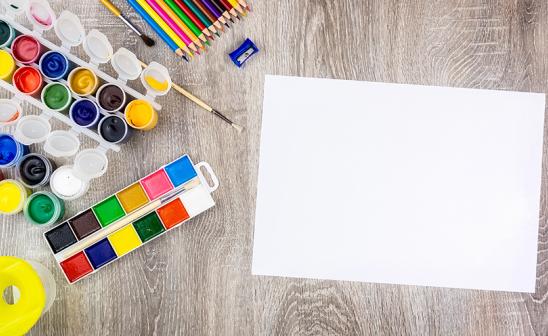Can artists predict the memorability of their own work?

A new study from the Brain Bridge Lab asks artists to submit work they deem either memorable or forgettable as the team continues to research if certain characteristics determine what we remember and forget.
By Sarah Steimer
An ambition of many artists is to create something that is impactful, and a necessary component for that is often how memorable the art is. UChicago researchers at the Brain Bridge Lab are now exploring what, exactly, makes art either memorable or forgettable — and they’re bringing artists themselves into the equation.
The new study, led by lab manager Trent Davis and Assistant Professor Wilma Bainbridge, will feature an art contest. Artists are asked to submit original 2D works (excluding photography or art with extreme gore or gratuitous nudity) that they created to be either memorable or forgettable.
The research is a continuation of the lab’s previous work, including a study published in PNAS in 2023 that explored the memorability of museum art. In that study, the team found that art has intrinsic memorability that could largely be predicted by a neural network called ResMem. They used ResMem to successfully predict what pieces people would remember in a visit to the Art Institute of Chicago.
But what that study couldn’t answer was what characteristics make something memorable or forgettable.
“Our neural network does a good job of predicting memorability, but it's sort of a black box,” Bainbridge says. “It's hard to know why it's so successful. We're thinking artists might be the human counterpoint to this really successful neural network. We can actually ask humans what they're picking up on; we can't ask the neural network as easily.”
In this latest study, the team is asking whether artists who create memorable work pick up on something in human memory that other artists do not. They’re testing artists’ intuition for what they as an individual think will be memorable and forgettable.
In the first part of the study, artists will submit one piece of art by April 1 that they deem memorable or forgettable (they cannot submit for both categories). They’re also asked to submit progress photos, which has a two-fold purpose: First, it’ll ensure the work’s authenticity. Second, it enriches the data available to researchers on the qualities that make something memorable. For example, when certain colors or a face are added to the image, does it change the work’s memorability?
The submitted works will be placed into an online pool and used in memory experiments, where participants won’t know they’re also involved in an art contest. They’re being tested on memory for the artwork only, not beauty, sentimentality, or other factors. Once the online experiments have wrapped, the top 20 most memorable and 20 most forgettable pieces will be deemed the “winners” of either category.
The winning pieces will be featured in an exhibit at Connect Gallery in Chicago. There, the researchers will be able to test in-person memory for these pieces. Visitors to the gallery will be asked to complete mobile memory tests on their phones once they leave, allowing the researchers to see how spatial context influences memory.
“The first question is, will these artists actually be successful or not?” Davis says. “Will it actually be the case that the people who enter the memorable side of the contest produce memorable art? It might turn out that artists who are trying to create forgettable artwork actually make really memorable artwork. And in addition to that, we want to look at what happens when we put these pieces together in the gallery space: What happens if you have a room of just all memorable art or all forgettable art?”
Davis says the team is also curious to know other factors that might influence whether an artist is successful in creating a memorable or forgettable work of art: Those submitting will be asked for information such as their age, and whether they consider themselves amateur or professional artists.
“People tend not to perform well when predicting the memorability of an image,” Davis says. “We want to see if artists, through the creation process, are able to pick up something that other people typically cannot.”
More information on how to submit or view the gallery exhibit can be found here.
Bedrock productions, an award winning and Emmy nominated film production company, will be working with the Brain Bridge lab to create a short documentary that explores the topic of Memorability. As such, they are interested in working with artists who are planning on entering the contest. If you are interested in being contacted by Bedrock about participating in filming, please complete this survey.
 THE UNIVERSITY OF CHICAGO
THE UNIVERSITY OF CHICAGO

